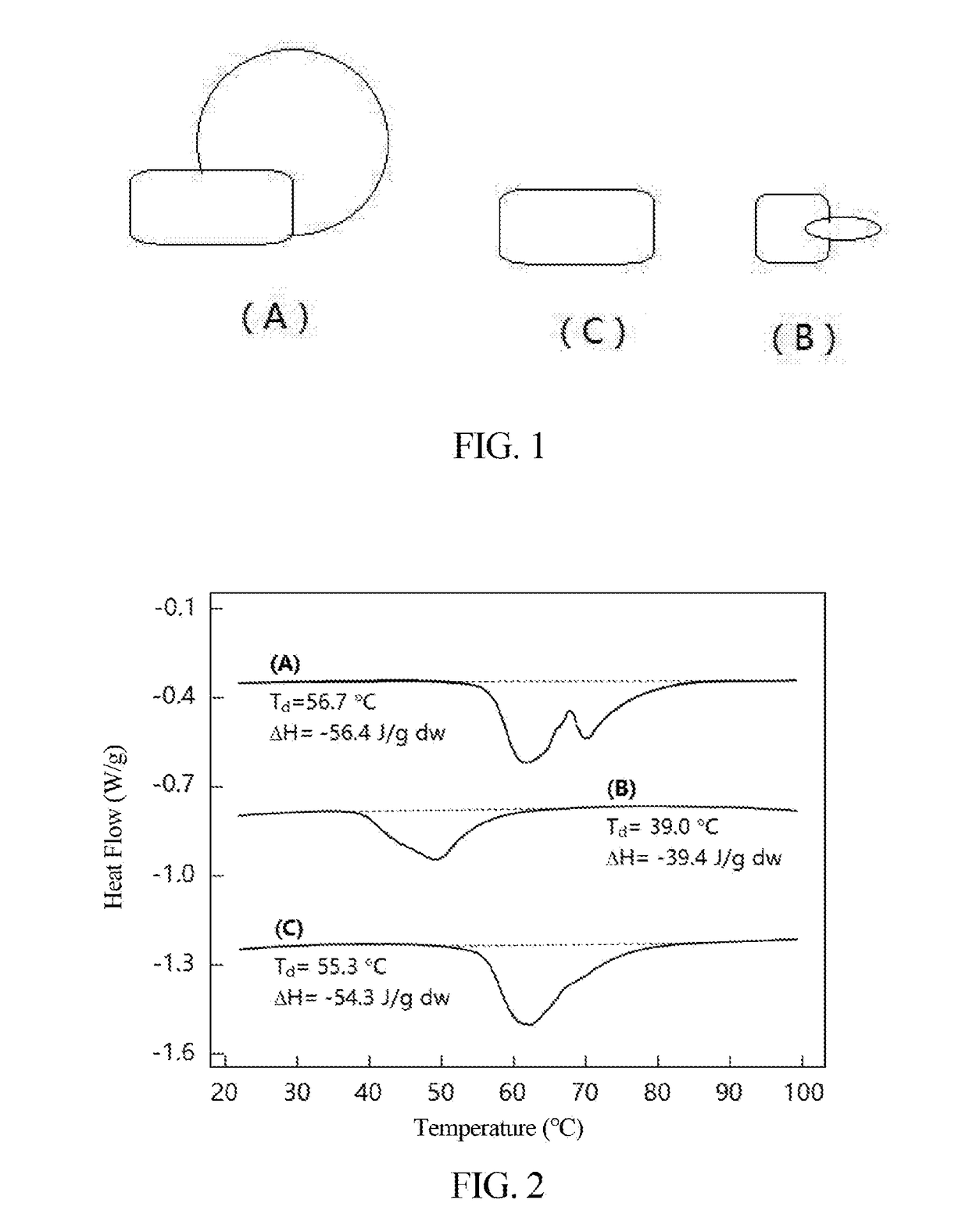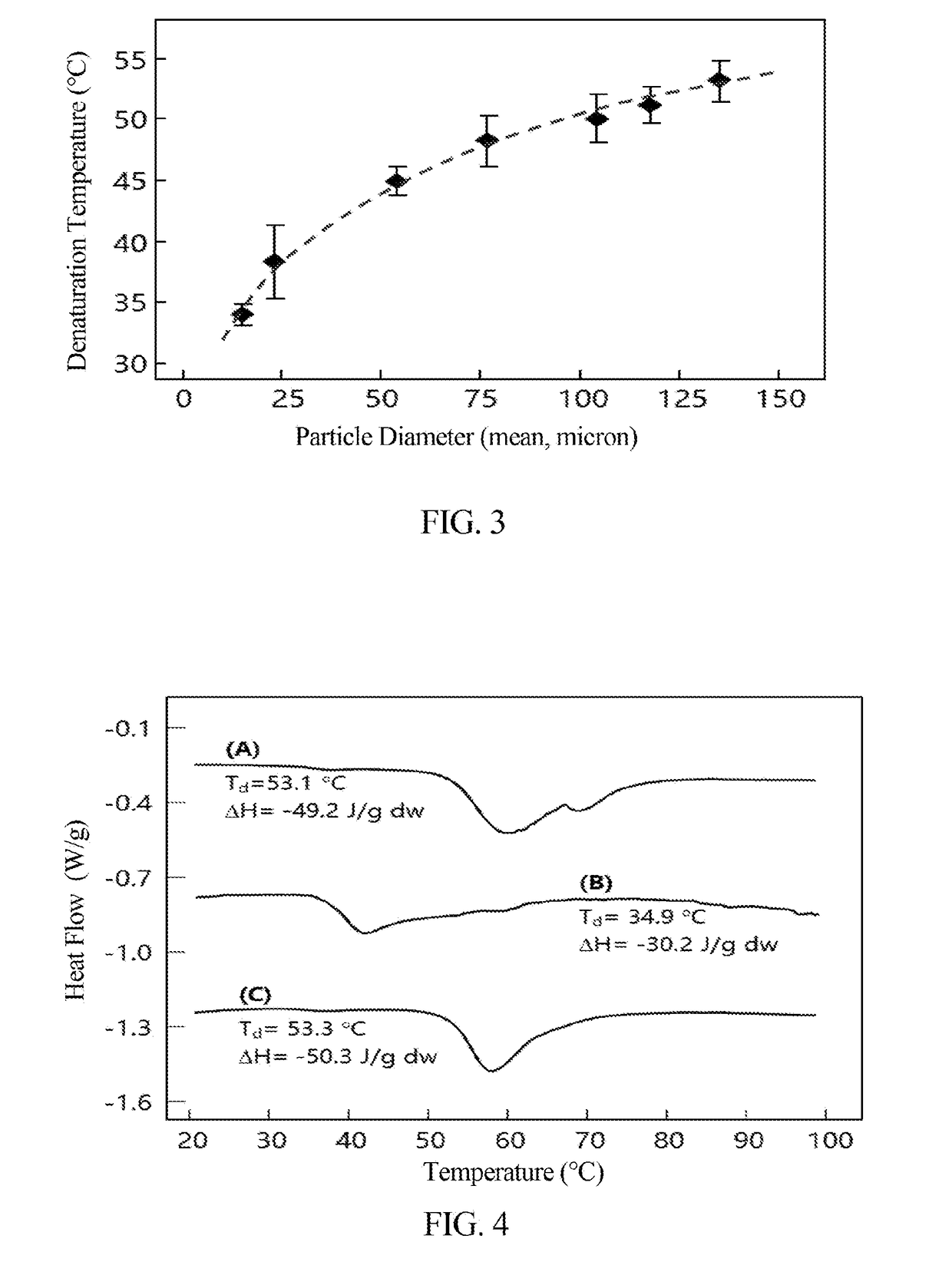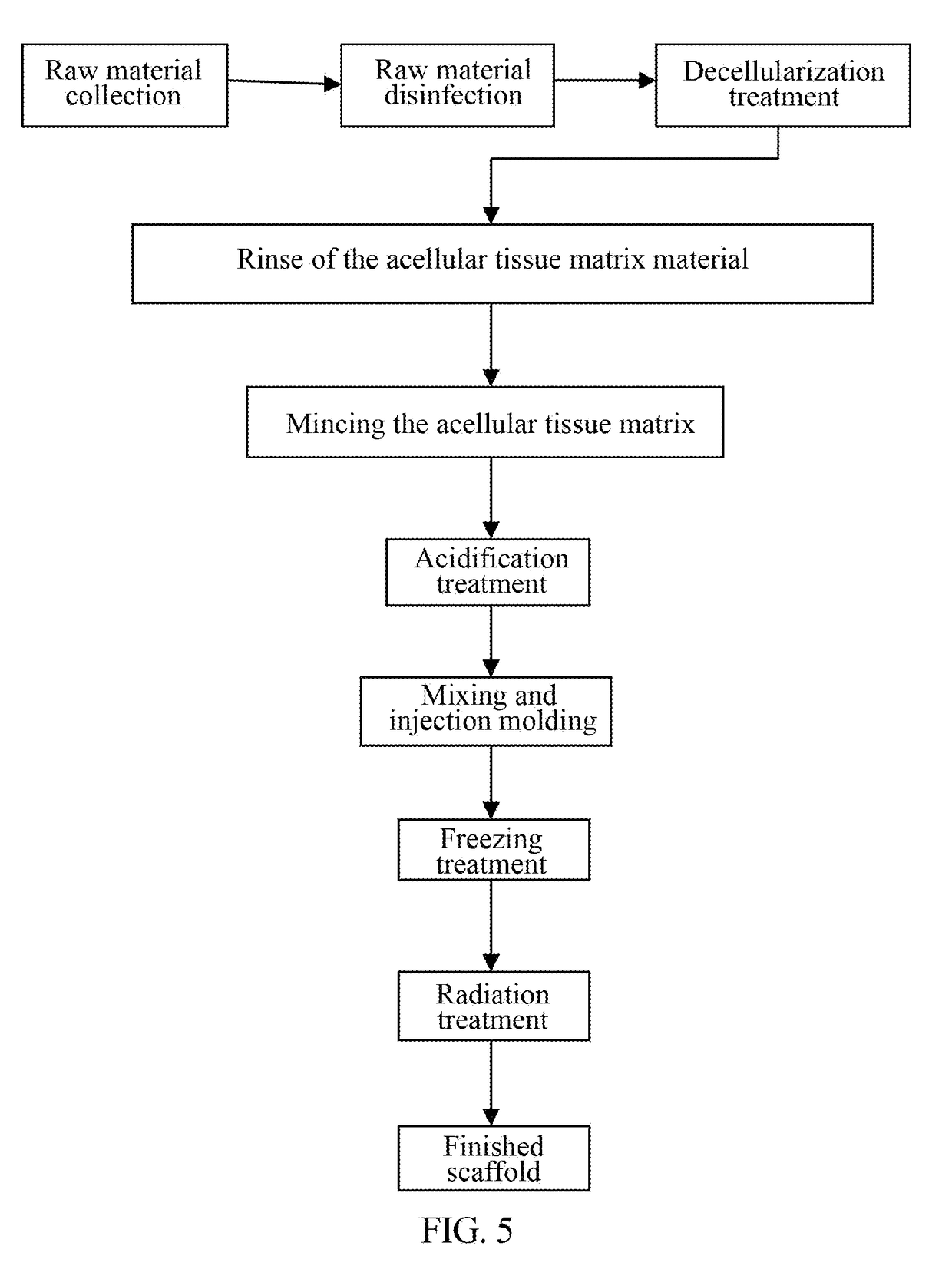Method for preparing cell growth scaffold having structural memory properties
- Summary
- Abstract
- Description
- Claims
- Application Information
AI Technical Summary
Benefits of technology
Problems solved by technology
Method used
Image
Examples
examples
[0023]Example 1, fresh pigskin was collected from a newly slaughtered and dehaired pig body, fat and epidermis were mechanically removed, and dermis with a thickness of about 1.5 mm was taken. After the blood and other dirt in the skin were washed away, the remaining hair on the skin was manually pulled out. The pig dermis was cut into a little piece with a length of about 1 cm and a width of about 1 cm, and rinsed with purified water. 200 g of dermis raw material was weighed and placed in a 1 L high density polypropylene bottle, to which was added a 800 mL of alkaline solution containing 2% sodium carbonate and 10 mM sodium hydroxide, and treated on a shaking bed for 20 hours (pH=12.5). After being treated with the alkaline solution, a 0.5 M acetic acid solution was used to perform acid-base neutralization. The solution after neutralization was poured out, 800 mL of 5 mM hydroxyethylpiperazine ethane sulfonic acid buffer solution (pH=7.5) containing 0.5% sodium deoxycholate and 5 m...
PUM
| Property | Measurement | Unit |
|---|---|---|
| Temperature | aaaaa | aaaaa |
| Temperature | aaaaa | aaaaa |
| Length | aaaaa | aaaaa |
Abstract
Description
Claims
Application Information
 Login to View More
Login to View More - R&D
- Intellectual Property
- Life Sciences
- Materials
- Tech Scout
- Unparalleled Data Quality
- Higher Quality Content
- 60% Fewer Hallucinations
Browse by: Latest US Patents, China's latest patents, Technical Efficacy Thesaurus, Application Domain, Technology Topic, Popular Technical Reports.
© 2025 PatSnap. All rights reserved.Legal|Privacy policy|Modern Slavery Act Transparency Statement|Sitemap|About US| Contact US: help@patsnap.com



